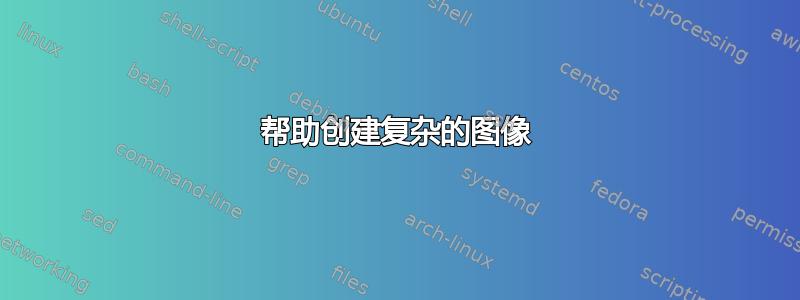
答案1
\documentclass[tikz,border=3.14mm]{standalone}
\usepackage{tikz-3dplot}
\makeatletter
%along z axis % from https://tex.stackexchange.com/a/375604/121799
\define@key{z sphericalkeys}{radius}{\def\myradius{#1}}
\define@key{z sphericalkeys}{theta}{\def\mytheta{#1}}
\define@key{z sphericalkeys}{phi}{\def\myphi{#1}}
\tikzdeclarecoordinatesystem{z spherical}{%
\setkeys{z sphericalkeys}{#1}%
\pgfpointxyz{\myradius*cos(\mytheta)*cos(\myphi)}{%
\myradius*cos(\mytheta)*sin(\myphi)}{\myradius*sin(\mytheta)}
}
\tikzdeclarecoordinatesystem{z spherical visible}{%
\setkeys{z sphericalkeys}{#1}%
\pgfmathsetmacro{\Xtest}{cos(90-\tdplotmaintheta)*cos(\tdplotmainphi-90)*cos(\mytheta)*cos(\myphi)
+cos(90-\tdplotmaintheta)*sin(\tdplotmainphi-90)*cos(\mytheta)*sin(\myphi)
+sin(90-\tdplotmaintheta)*sin(\mytheta)}
% \Xtest is the projection of the coordinate on the normal vector of the visible plane
\pgfmathsetmacro{\ntest}{ifthenelse(\Xtest<0,0,1)}
\ifnum\ntest=0
\pgfmathsetmacro{\myx}{\myradius*cos(\mytheta)*cos(\myphi)*\raarot
+\myradius*cos(\mytheta)*sin(\myphi)*\rabrot+\myradius*sin(\mytheta*\racrot}
\pgfmathsetmacro{\myy}{\myradius*cos(\mytheta)*cos(\myphi)*\rbarot
+\myradius*cos(\mytheta)*sin(\myphi)*\rbbrot+\myradius*sin(\mytheta*\rbcrot}
\pgfpoint{\RadiusSphere*cos(atan2(\myy,\myx))*1cm}{\RadiusSphere*sin(atan2(\myy,\myx))*1cm}
\else
\pgfpointxyz{\myradius*cos(\mytheta)*cos(\myphi)}{%
\myradius*cos(\mytheta)*sin(\myphi)}{\myradius*sin(\mytheta)}
\fi
}
% from https://tex.stackexchange.com/a/127045/121799
\tikzset{use path/.code=\tikz@addmode{\pgfsyssoftpath@setcurrentpath#1}}
\makeatother
\begin{document}
\pgfmathsetmacro{\RadiusSphere}{4.5}
\begin{tikzpicture}
\path[use as bounding box] ({-1.2*\RadiusSphere},{-1.2*\RadiusSphere}) rectangle
({1.2*\RadiusSphere},{1.2*\RadiusSphere});
\tdplotsetmaincoords{70}{110}
\begin{scope}[tdplot_main_coords,samples=60,rotate=30]
\begin{scope} % cyan hemisphere
\shade[ball color=cyan,tdplot_screen_coords] (0,0) circle (\RadiusSphere);
\filldraw[white] plot[smooth,variable=\x,domain=0:360]
(z spherical visible cs: radius=4.5,phi={00},theta={\x});
\path (z spherical cs: radius=4.5,phi={0},theta={120}) coordinate
(t) (z spherical cs: radius=4.5,phi={00},theta={-60}) coordinate (b);
\fill[white,tdplot_screen_coords] (t) -- (b) --
++ (2*\RadiusSphere,0) coordinate(aux) -- (aux |- t) ;
\fill[green!30!black] plot[smooth,variable=\x,domain=0:360]
(z spherical cs: radius=4.5,phi={00},theta={\x});
\end{scope}
\begin{scope} % yellow hemisphere
\pgfmathsetmacro{\RadiusSphere}{4}
\fill[yellow!60!orange] plot[smooth,variable=\x,domain=00:180,samples=101]
(z spherical cs: radius=\RadiusSphere,phi={\x},theta={0}) --cycle;
\path[save path=\pathC]
plot[smooth,variable=\x,domain=00:118,samples=101]
(z spherical cs: radius=\RadiusSphere,phi={\x},theta={0})
-- plot[smooth,variable=\x,domain=00:-95,samples=31,tdplot_screen_coords] (\x:\RadiusSphere)
-- plot[smooth,variable=\x,domain=-75:0,samples=31,tdplot_main_coords]
(z spherical cs: radius=\RadiusSphere,phi={0},theta={\x});
\clip[use path=\pathC];
\shade[ball color=yellow!60!orange,tdplot_screen_coords] (0,0) circle (\RadiusSphere);
\end{scope}
\begin{scope}
\fill[gray] (0,0,0) -- plot[smooth,variable=\x,domain=90:0]
(z spherical visible cs: radius=3.5,phi={90},theta={\x});
\end{scope}
\begin{scope}
\pgfmathsetmacro{\RadiusSphere}{3}
\draw[save path=\pathA] plot[smooth,variable=\x,domain=90:00]
(z spherical visible cs: radius=\RadiusSphere,phi={0},theta={\x})
-- plot[smooth,variable=\x,domain=0:90]
(z spherical visible cs: radius=\RadiusSphere,phi={\x},theta={0})
-- plot[smooth,variable=\x,domain=0:90]
(z spherical visible cs: radius=\RadiusSphere,phi={90},theta={\x});
\clip[use path=\pathA];
\shade[ball color = orange,tdplot_screen_coords] (0,0) circle (\RadiusSphere);
\end{scope}
\begin{scope}
\pgfmathsetmacro{\RadiusSphere}{3.5}
\path[save path=\pathB]
plot[smooth,variable=\x,domain=90:00,samples=101]
(z spherical visible cs: radius=\RadiusSphere,phi={90},theta={\x})
-- plot[smooth,variable=\x,domain=90:180]
(z spherical visible cs: radius=\RadiusSphere,phi={\x},theta={0})
-- plot[smooth,variable=\x,domain=0:90]
(z spherical visible cs: radius=\RadiusSphere,phi={180},theta={\x});
\clip[use path=\pathB];
\shade[ball color =gray!80,tdplot_screen_coords] (0,0) circle (\RadiusSphere);
\end{scope}
\end{scope}
\draw[orange] (-1,2) node[circle,fill,inner sep=1pt]{} -- ++(135:1) -- ++(180:3);
\draw[orange] (225:4) node[circle,fill,inner sep=1pt]{} -- ++(225:1.5);
\draw[orange] (-45:3.5) node[circle,fill,inner sep=1pt]{} -- ++(-45:2);
\draw[orange] (1,3.1) node[circle,fill,inner sep=1pt]{} -- ++(45:1) -- ++(2.5,0);
\end{tikzpicture}
\end{document}
请注意,尽管原则上您可以调整视图,但在这里您不能,因为我通过反复试验找到了一些角度(对于黄色半球)。




